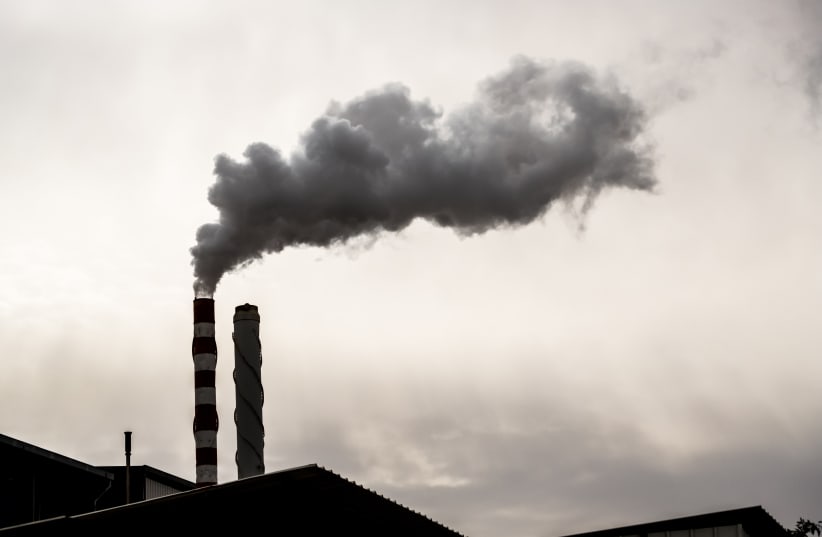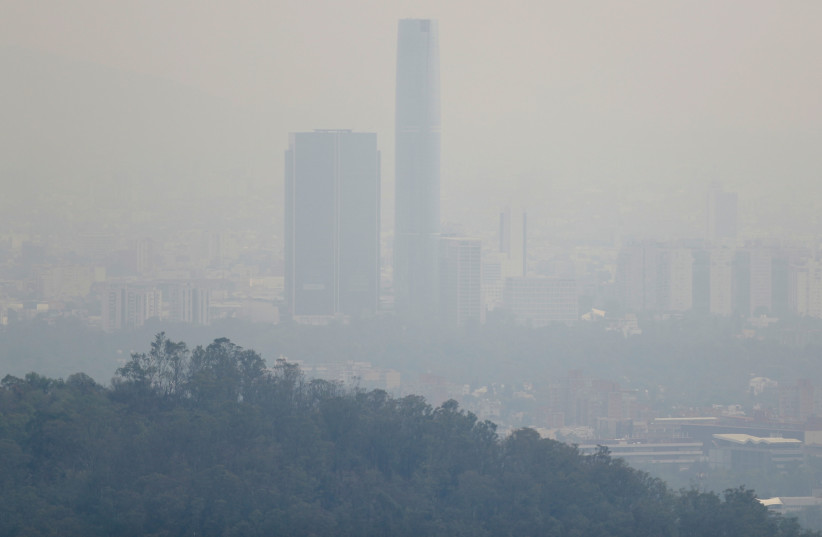Increased air pollution is linked to an increase in suicide rates, according to the first-ever large-scale study on the relationship between air pollution and suicide rates.
The study was published by Claudia Persico and Dave Marcotte of the American University in Washington, DC as a working paper with the National Bureau of Economic Research last month. The paper has not been peer-reviewed.
Air pollution is known for causing negative effects on pulmonary and cardiovascular health, but has also been shown to affect the brain and behavior.
Small particulate matter can penetrate the lungs and inhibit the flow of oxygen into the bloodstream and the brain, with high levels of air pollution linked to lower productivity, poorer strategic choices and worse performance on academic tests.
The two researchers noted that elevated levels of cytokines, proteins produced by immune cells in response to infection and inflammation, had been found in post-mortem tissue samples from the brains of suicide victims.
First large-scale study to examine link between suicide and air pollution
While the connection between air pollution and suicide rates has been studied in small-scale studies in the past, the researchers decided to examine the link in a large-scale study by examining data for all deaths in the US over a period of eight years.
The researchers estimated the impacts of individual pollutants on suicide rates across the country by using daily data on suicide counts matched to air quality data from the Centers for Disease Control (CDC), daily weather data from the National Oceanic and Atmospheric Administration (NOAA), daily pollution data from the Environmental Protection Agency and CDC, and demographic data between 2003-2010.
The researchers adjusted for alterations in wind direction as pollution levels change based on wind direction.
Persico and Marcotte found that a one microgram per cubic meter increase in fine particles called PM2.5 is associated with a 0.49% increase in daily suicides (a 0.5% increase above the mean). They also found that this level of air pollution was associated with a 0.17% increase in suicide-related hospitalizations, a 50% increase above the mean.
With this rate, the average county would experience an increase of about 0.09 daily suicides per million residents when there is high levels of air pollution. While this number is small, it is a daily risk, meaning that in a county with a million residents, a year with 11 additional unhealthy air days would lead to one additional suicide death.
The results imply that a one microgram per cubic meter increase in PM2.5 on each day over a year would lead to 153.8 additional suicides in that year. The paper noted that while average air pollution varies from day to day by about four micrograms per cubic meter, daily air pollution is highly variable in the US.
The researchers additionally found that this level of air pollution was associated with a 0.36% increase in all daily deaths, a 0.4% increase above the mean.
Effect of air pollution on suicide rate changes based on poverty and gun laws
Geography also seems to affect how much of an effect air pollution has on suicide rates, with rural counties and counties with high poverty levels and less restrictive gun laws seemingly disproportionately affected.
The effects also seem to become more severe with age, with people over 55 years of age suffering higher suicide rates associated with air pollution.
Days with high levels of air pollution were also found to result in more self-reported depressive symptoms.
The World Health Organization estimated that ambient air pollution resulted in an additional 77,550 deaths in the US in 2016 due to cardiovascular and pulmonary diseases. Persico and Marcotte noted that their paper shows that the WHO's figure understates the effect of ambient air pollution on mortality.
The researchers added that interventions to keep those at risk of suicide indoors or have them refrain from strenuous activity outdoors are likely to provide protection. Air filtration and purifying system may also be protective for depressed patients in settings with high numbers of at-risk people.

